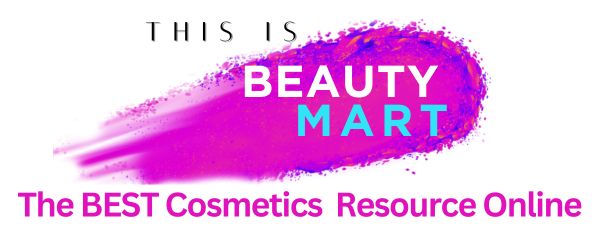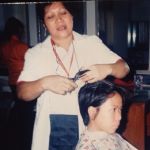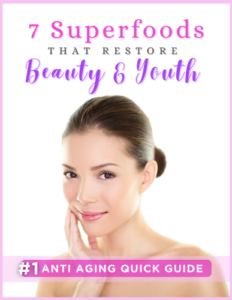Hair bleach is a powerful chemical that can transform your hair color from brunette to platinum blonde. It is an important part of any hair maintenance arsenal.
However, this hair-lightening process requires careful consideration and knowledge to achieve the desired results without causing damage.
In this hair bleach guide, we will cover everything you must know to safely color your hair, plus tips on minimizing damage and maintaining healthy hair. I also have another article where I share my top hair bleach pick.
So, let’s dive into the world of hair bleaching and learn how to achieve your dream hair color safely.
Table of Contents
Hair Bleach Powder – What Is Powder Bleach?
Hair bleach powder is a key component in lightening hair. It is commonly used to bleach dark hair before applying a dye or to create highlights and balayage effects.
It is important to use hair bleach powder with caution, as it can damage the hair if used improperly or left on for too long.
It is advised to follow the instructions on the packaging and perform a strand test before applying the bleach to the entire hair.
Find out what it’s made of, how to use it safely, and the best bleach for your hair. Read on to learn all about it!
Hair Bleach Chemical Formula: What Is It Made Of?
The chemical formula of hair bleach is a potent mix, primarily composed of hydrogen peroxide and persulfate salts.
These two key compounds perform the essential function of lightening your natural hair color.
The process begins when they penetrate the hair shaft, breaking down the natural pigment that gives your tresses their original hue.
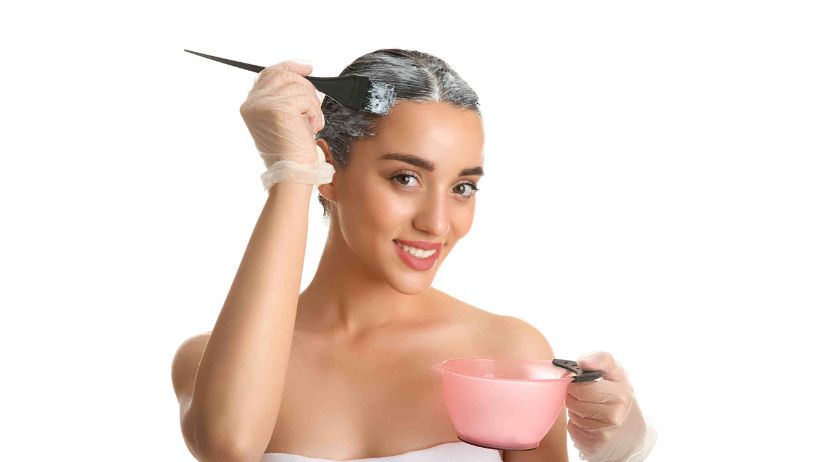
Hydrogen peroxide acts as an oxidizing agent. It helps to lift off the darker colors while also preparing for toner application which can add desired shades onto bleached strands.
On its part, common types of persulfates found in bleach powders include ammonium persulfate and potassium persulfate.
These provide extra lightening power necessary for higher levels of lift especially on dark brown or black locks.
Is Bleach And Bleaching Powder The Same?
Bleach and bleaching powder are not identical, although they both serve the purpose of lightening hair color.
Their makeup is different: bleach is generally a liquid or gel-based product while bleaching powder comes as blue or white powder.
Both products need a developer to activate their lightening properties.
The main ingredient in bleach is typically hydrogen peroxide, and it’s designed to lift the natural pigment from your hair strands effectively.
On the other hand, bleaching powder usually contains ingredients like ammonium persulfate and potassium persulfate. These help break down melanin in your hair, causing it to lighten.
Be aware that these chemicals can be harsh on your locks; hence you need to ensure safety practices when using either product.
What Does Bleach Powder Do To Hair?

Bleach powder plays a crucial role in the process of lightening hair. This product provides force to lighten your natural hair color by lifting away pigment.
Think of it as a powerful removing agent that wipes out the current color from your locks, paving the way for a new hue.
The chemical reaction initiated by bleach powder results in swelling hair cuticles. This produces an illusion of volume, making strands appear fuller and thicker than before.
However, working with bleach demands caution as it can lead to profound damage if misused or overused.
Can You Bleach Your Hair With Just The Powder?
Using just the bleach powder to lighten your hair won’t give you the desired results. The powder, on its own, lacks the needed activating component.
That’s where a developer comes into play. It activates the bleaching agent in your powder to effectively lift color from the hair strand.
Depending on how many levels of lift you want, developers come in different strengths.
Always remember that higher volume developers can lead to more damage.
It’s better to use a lower-volume developer for longer than a high-volume one for less time.
So, while bleach powder is a crucial part of lightening your hair, it does not work alone and requires mixing with a developer to create an effective bleaching mixture.
What Is The Safest Bleach For Hair?
The safest bleach for hair contains persulfate salts and hydrogen peroxide, which act as additional oxidizing agents in powder-bleaches.
These bleaching agents are commonly mixed together to create a stable and effective solution.
One popular choice among professional colorists is the Wella Professionals Blondor Multi-Blonde Lightening Powder, which is considered the best overall professional hair bleach.
It’s important to choose a bleach that prioritizes the health of your hair strands while still giving you the desired lightening effect.
How Long Can I Leave Powder Bleach In My Hair?
Leave the powder bleach in your hair for about 10-15 minutes if you have fine hair, 30 minutes for dark or coarse hair, and around 15-20 minutes for blonde hair.
The recommended time to leave the bleach mixture in your hair is typically 30 minutes when using a 20-volume developer.
Remember to cover your hair with a shower cap and let the mixture sit for at least 15 to 30 minutes.
It’s important to follow the directions on the box. Wait at least two weeks between bleaching sessions to allow your hair time to recover.
Hair Bleach Kit Essentials For Your (Home) Salon

Here is a list of essential items you’ll need for your hair bleach kit: bleaching supplies, toning supplies, and strengthening and aftercare supplies.
Bleaching Supplies
Bleaching supplies are essential for safely and effectively lightening your hair at home.
Most bleaching kits come with everything you need, including instructions, developer, bleaching powder or liquid, and gloves to protect your hands.
These kits often include clips as well, which can help you section off your hair for easier application.
The key components of a bleach kit are the developer and either a powder or liquid lightener.
The developer reacts with the lightener to lift the color from your hair strands.
Additionally, toner is commonly recommended to achieve the desired color and tone after the bleaching process.
Toning Supplies
Toning supplies are an essential part of achieving your desired hair color after bleaching.
Whether you have natural or bleached hair, a toner can help eliminate any unwanted brassy tones.
Sally’s carries a range of toning options specifically designed for addressing brassy hair.
With the right toner, you can achieve the perfect shade that complements your skin tone and enhances your overall look.
Don’t forget to include toning supplies in your hair care routine to maintain vibrant and beautiful colored hair.
Strengthening and Aftercare Supplies
To keep your hair healthy and strong after bleaching, it’s essential to have the right strengthening and aftercare supplies.
These products help repair and nourish your hair, ensuring it stays in good condition.
Deep Conditioning
Look for deep conditioning treatments or masks that are rich in protein to replenish lost nutrients and restore moisture.
Hydarating Mask
Using a hydrating hair mask once a week can also help protect your strands from further damage.
Leave-Ins
Additionally, invest in a leave-in conditioner or oil to provide ongoing hydration and protection against breakage.
Heat Protectants
And don’t forget to use heat protectant products before styling with heat tools!
Taking these steps will ensure that your bleached hair stays healthy, vibrant, and beautiful.
How To Use Hair Bleach At Home – The Basics
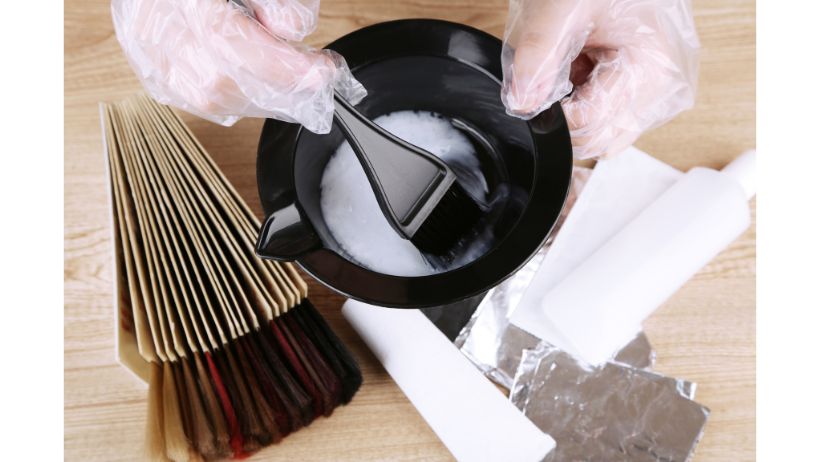
To use hair bleach at home, you’ll need to:
1. Start by sectioning your hair for easier application.
2. Then, mix the hair bleach and developer together in a mixing bowl.
3. Next, apply the bleach mixture to your hair, focusing on the roots if needed.
4. Monitor the process closely and rinse out the bleach when it reaches your desired level of lightness.
5. After rinsing, nourish your hair with a hydrating mask or conditioner.
6. Finally, prepare for toning by applying a toner to achieve your desired shade of blonde.
1. Sectioning The Hair For Bleaching
To ensure an even and precise application of bleach, it’s important to section your hair before bleaching.
This involves dividing your hair into four quadrants:
front left & front right
back left & back right
Secure each quadrant with clips or hair ties so they don’t get in the way during the bleaching process.
Remember, sectioning is a crucial step when bleaching your hair at home for optimal results.
2. Mixing The Bleach And Developer
To safely bleach your hair at home, it is crucial to mix the bleach powder and developer correctly.
The recommended ratio is 1 part bleach powder to 2 parts developer, or you can use 4 ounces of developer with 2 ounces of bleach.
Mixing these two ingredients properly ensures that you achieve the desired results without causing any damage to your hair.
Paying attention to this step will help you avoid any negative effects and make sure that your at-home bleaching experience is successful.
Sectioning helps you apply the bleach product neatly and ensures that every strand is covered properly.
Start by creating a part in the middle of your head from forehead to nape, then divide each side into two sections horizontally.

3. Applying the bleach
To achieve your desired hair color, the next step after mixing the lightener and developer is applying the bleach to your hair.
Pre-bleaching
1. Ensure that your hair is dry before starting.
2. It’s recommended to wear gloves to protect your hands from the chemicals.
Bleaching Proper
1. Begin by sectioning off your hair so that it’s easier to work with.
2. Then, using a brush or applicator, apply the bleach mixture evenly from root to tip of each strand, making sure all strands are covered.
Take your time and work in small sections for better precision.
3. Once applied, cover your hair with a shower cap to lock in heat and help accelerate the lightening process.
4. Leave the bleach on for the recommended amount of time mentioned in the instructions based on your desired level of lift or until you reach a pale yellow shade.
4. Bleaching the roots
To achieve the perfect blonde hair, bleaching the roots is a crucial step. This process involves applying bleach to the new growth near your scalp, where your natural hair color is showing through.
By targeting these roots, you can create an even and consistent color throughout your hair.
When bleaching the roots, it’s important to follow specific instructions and use caution to avoid causing damage or irritation to your scalp.
After the bleach has been applied and processed, make sure to thoroughly rinse it out before moving on to other steps in the coloring process.
Remember that bleaching can cause dryness and breakage, so be sure to take extra care of your newly lightened hair with hydrating products and regular deep conditioning treatments.
5. Monitoring the process
During the hair bleaching process, it is important to monitor the progress and check the color of your hair regularly.
This will help you ensure that you achieve the desired level of lightness without overprocessing or damaging your strands.
Keep an eye on how your hair is reacting to the bleach mixture and assess if any adjustments need to be made.
Remember, leaving bleach on for too long can result in brittle white hair, so monitoring and timing are key factors in achieving successful results.
6. Rinsing and nourishing the hair
After using hair bleach at home, it’s crucial to rinse and nourish your hair.
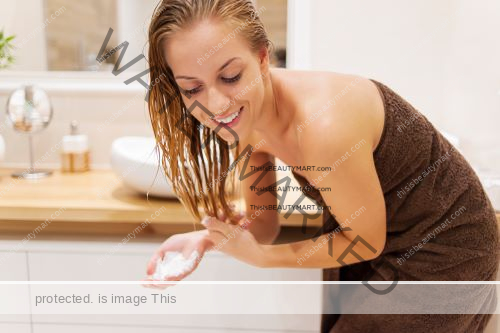
Rinsing thoroughly helps remove any leftover bleach or chemicals from your strands, ensuring that your hair is clean and healthy.
This step also prevents further damage to your locks.
Once rinsed, nourishing your hair with a deep conditioner or hydrating mask is essential for repairing and hydrating the hair shaft.
These products infuse moisture and nutrients back into your strands, restoring their strength and vitality.
By properly rinsing and nourishing after bleaching, you can maintain the health and appearance of your newly colored hair.
7. Preparing for toning
To achieve the best results when toning your hair after bleaching, it is important to properly prepare your hair.
This process should start at least two weeks before you plan on bleaching your hair.
It is recommended to work with virgin or almost virgin hair for better results.
The first step in preparing for toning is to identify the areas of your hair that need to be toned, especially the regrowth area.
Once you have identified these areas, you can mix one part toner with two parts 20v developer for an effective and balanced mixture to tone your hair.
8. Applying the toner
Once you have completed the bleaching process and rinsed out the bleach mixture, it’s time to apply the toner.
The toner is used to neutralize any unwanted brassy or yellow tones in your hair and achieve your desired shade.
To do this, lay out your toning supplies which include the toner(s) and peroxide developer.
Depending on the instructions of your chosen toner, you will need either 10 or 20 vol. peroxide developer.
Mix them together according to the specific instructions provided with your product.
Then, carefully apply the toner evenly throughout your hair using a brush or applicator bottle.
9. Final wash
The final wash is a crucial step in the process of bleaching your hair at home.
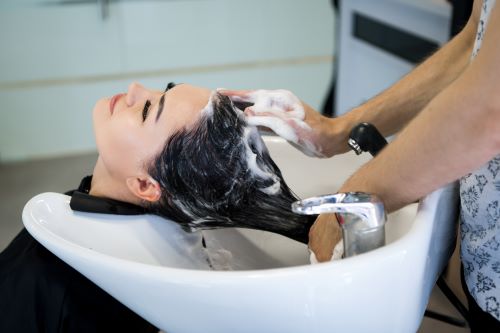
After applying the bleach, it’s recommended to cover your hair with a shower cap or plastic bag. This helps create heat and allows the bleach to work more effectively.
Once the desired amount of time has passed, you’ll need to rinse out the bleach mixture thoroughly using lukewarm water.
The final wash consists of mixing bleach with shampoo, which helps remove any leftover residue and ensures that your hair is clean and ready for toning or further styling.
Remember to follow proper aftercare routines to keep your hair healthy and nourished after bleaching.
Post-Bleaching Hair Care To Avoid Hair Damage And Breakage
After bleaching your hair, it’s essential to follow a proper post-bleaching hair care routine to maintain its health and prevent damage.
Discover the best tips and products to nourish and protect your newly bleached locks.
1. Regular trimmings
Getting regular trimmings is an important part of maintaining healthy and beautiful hair after bleaching.
When you bleach your hair, the process can cause some damage to the ends, making them more prone to breakage and split ends.

Additionally, getting a cut or trim immediately after getting your hair colored is recommended to seal the ends and prevent further damage.
Aim to get a hair trim within a week of the bleaching treatment.
After that initial trim, it is suggested to visit the salon once every 8 weeks for regular trims to keep your hair in good condition.
This will help maintain the overall health of your hair and promote faster growth while keeping it looking its best.
2. Using purple shampoo
Purple shampoo is an essential product for anyone with bleached hair. It is specially formulated to tone dyed hair and neutralize any brassy or yellow tones that can occur over time.
By using purple shampoo one to three times a week, you can keep your blonde locks looking fresh and vibrant.
This ultra-pigmented shampoo not only helps maintain the color of your hair, but it also adds moisture and shine, leaving your strands looking healthy and beautiful.
So if you want to keep your bleached hair looking its best, make sure to incorporate purple shampoo into your regular hair care routine.
Remember, purple shampoo is specifically designed for blondes or those with lightened hair.
Its violet pigments work to counteract the unwanted warm tones that can develop in bleached hair.
3. Daily deep conditioning
To keep your bleached hair healthy and hydrated, daily deep conditioning is essential.
This process helps to replenish lost moisture, repair weakened strands, and restore the shine and softness of your hair.
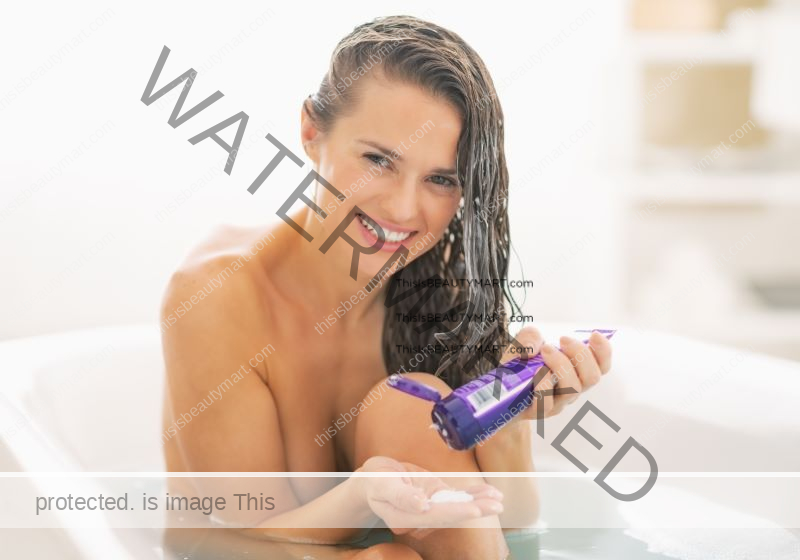
By using a moisturizing conditioner specifically designed for bleached hair, you can nourish and strengthen your locks on a regular basis.
It is recommended to incorporate this step into your hair care routine to prevent breakage, combat frizz, and improve overall texture.
With consistent deep conditioning, you can maintain the health of your bleached hair and enjoy its beautiful results for longer periods.
4. Weekly bond-repairing treatments
To keep your bleached hair healthy and strong, it’s important to incorporate weekly bond-repairing treatments into your hair care routine.
These treatments help restore the strength, shine, and softness of your hair that may have been compromised by the bleaching process.
Look for products with bond-repair technology, such as Olaplex, which can effectively repair disulfide bonds in bleach-damaged hair.
By regularly using these treatments, you can maintain the health of your bleached hair and keep it looking its best.
5. Consistent root bleaching
Consistent root bleaching is a crucial aspect of post-bleaching hair care. When you bleach your hair, it’s important to keep up with regular touch-ups on the roots.
This process involves applying bleach specifically to the new hair growth near the scalp, ensuring that your color remains consistent from root to tip.
By addressing regrowth promptly and consistently, you can maintain a seamless and cohesive look without any noticeable lines of demarcation.
So, if you’re looking to rock that blonde or silver hair color for an extended period, don’t forget about consistent root bleaching as part of your maintenance routine!
Natural Ways to Bleach Your Hair at Home
You can achieve lighter hair at home using natural ingredients.
Henna, cinnamon, apple cider vinegar, lemon, honey, baking soda, salt, vitamin C, rhubarb, and chamomile tea are all effective ways to bleach your hair naturally.
These ingredients work by either removing the color or lightening the hair strands. For example, lemon juice contains citric acid which acts as a natural bleaching agent.
It’s important to note that results may vary depending on your hair type and current color.
Side Effects of The Bleaching Process and When to Consult a Doctor
Bleaching your hair can have some side effects that you need to be aware of.
1. One common issue is the lingering scent of ammonium hydroxide, which is the chemical in bleach powder.
This smell can last for a few days after bleaching.
2. Another potential side effect is scalp irritation, which can cause dryness and sensitivity.
3. Some people may also experience skin dryness and even hair breakage as a result of bleaching.
It’s important to know that using hydrogen peroxide in the bleaching process can have damaging effects on your hair.
It can lead to hair loss, damage, and even scalp irritation.
If you notice any of these symptoms or if you’re concerned about the condition of your hair after bleaching, it’s best to consult a doctor.
They can help determine the underlying cause and provide appropriate treatment options.
Remember, while there are risks associated with bleaching your hair, many people achieve their desired results without any major issues.
By following proper precautions and taking care of your hair before and after the process, you can minimize potential side effects and enjoy beautiful colored locks.
Final Thoughts On How To Not Damage Your Hair With Hair Bleach
Safely coloring your hair with bleach requires careful attention and proper technique. By understanding the ingredients, following safety guidelines, and maintaining your hair afterward, you can achieve beautiful results.
Whether you choose to go blonde or experiment with a new shade, remember to prioritize the health of your hair throughout the process.
FAQs
Q: What is a safe way to use hair bleach?
A safe way to use hair bleach involves doing a skin allergy test first, then following a step-by-step guide for the bleach application. This process can help prevent an allergic reaction and minimize hair damage.
Q: Can all hair types get bleached?
Yes, all hair types—curly, straight, dry or oily—can be bleached but the effect of lightening may vary due to differences in natural level and porosity of your own hair.
Q: Do I need professional products for at-home hair bleaching?
While not mandatory for home applications, using best-selling professional products like powder lightener or cream developer could offer better results and cause less harm than low-quality alternatives.
Q: Is there potential risk when trying out drastic changes in my natural hair color with bleach treatment?
Potential risks include excessive dryness, protein bond damage especially on darker shades like black or dark brown as they require more levels of lifting that might lead to end result being far from intended lighter color; hence it’s important to follow proper steps including patch testing.
Q: How can you protect your hair during a bleach job?
Maintain the health of your unprocessed hair by preserving its natural oils before you apply hair bleach; this sometimes means not washing it right away if you’re about to do a full head application.
Q: Does wet or dry state influence how effective the final result after applying semi-permanent color will be post-bleach?
Always remember that dyeing should be done on completely dried up strands! For achieving desired shade whether platinum blonde or pale highlights, dampness could affect product penetration causing uneven absorption and potentially unsuccessful outcome.
Q: What is hair bleach?
A: Hair bleach is a chemical product used to lighten or remove the natural color pigment in hair strands. It is commonly used before applying a hair dye or to create a blonde or platinum look.
Q: How does hair bleach work?
A: Hair bleach contains ingredients like hydrogen peroxide and ammonia that work together to break down the hair’s natural color pigment. As a result, the hair becomes lighter.
Q: Can I bleach my hair at home?
A: Yes, you can bleach your hair at home using hair bleach kits available in the market. However, it is recommended to seek professional help, especially if you have dark hair or if it’s your first time bleaching.
Q: What are the risks of using hair bleach?
A: Hair bleach can cause damage to your hair if not used correctly. It can lead to dryness, breakage, and overall hair damage. It is important to follow the instructions carefully and do a patch test before applying it to your entire head.
Q: Should I bleach my hair if it’s already damaged?
A: Bleaching already damaged hair can further weaken it and lead to additional breakage. It’s best to repair and nourish your hair before considering bleaching. Consult a professional hair stylist for personalized advice.
Q: Can I bleach my dark hair to a light blonde at once?
A: It is difficult to achieve a light blonde color on dark hair in just one bleaching session. Multiple sessions may be required, with time gaps in between, to gradually lighten your hair to the desired shade.
Q: How do I protect my hair while bleaching?
A: To protect your hair during the bleaching process, you can apply coconut oil or a hair mask before bleaching. This helps to minimize damage and nourish your hair strands.
Q: What is a toner and do I need to use it after bleaching?
A: A toner is a hair product used to neutralize any unwanted brassy or yellow tones after bleaching. It can help achieve a more desired hair color. It’s recommended to use a toner after bleaching, especially if you want a cooler or platinum look.
Q: Can I use regular shampoo and conditioner after bleaching?
A: It is recommended to use a shampoo and conditioner specifically designed for color-treated or bleached hair. These products are formulated to protect and nourish your hair after the bleaching process.
Q: Is it possible to bleach my hair without using ammonia?
A: Yes, there are ammonia-free hair bleach products available in the market. These products use alternative ingredients to lighten the hair without ammonia’s strong odor and potentially damaging effects.
Q: What is hair bleach?
A: Hair bleach is a chemical product that lightens the color of hair by removing the natural pigment.
Q: How does hair bleach work?
A: Hair bleach contains strong chemicals, usually hydrogen peroxide, which breaks down the melanin in the hair. Melanin is responsible for giving hair its color.
Q: Is hair bleach damaging to hair?
A: Yes, hair bleach can be damaging to hair if not used properly. It can cause dryness, breakage, and damage to the hair cuticle. It is crucial to follow the instructions on the product and take necessary precautions to protect your hair during the bleaching process.
Q: What are some common hair types that can be bleached?
A: Hair bleach can be used on various hair types, including blond, light brown, and black hair. However, the results may vary depending on the natural hair color and condition.
Q: How can I further protect my hair while bleaching?
A: To protect your hair while bleaching, you can use a hair mask or deep conditioner before and after the bleaching process. It is also recommended to avoid excessive heat styling and to minimize the use of other chemical treatments.
Q: What is the difference between a hair lightening system and hair bleach?
A: Hair lightener and hair bleach are essentially the same thing. They both refer to products used to lighten the hair color. The term “hair lightener” is often used in reference to products that are gentler on the hair.
Q: Can I bleach my hair if it is already damaged?
A: It is not recommended to bleach severely damaged hair, as it can further weaken and break the hair strands. It is best to focus on nourishing and repairing the hair before considering any chemical treatments.
Q: What is a developer and why do I need it for bleaching?
A: A developer is a hydrogen peroxide-based product that activates and accelerates the bleaching process. It is necessary to mix the developer with the hair bleach powder to achieve the desired lightening effect.
Q: How long does it take to bleach hair?
A: The duration of the bleaching process can vary depending on the desired result and the starting hair color. It can take anywhere from 30 minutes to several hours.
Q: What is a developer and why is it used with hair bleach?
A: A developer is a hydrogen peroxide-based solution that is mixed with hair bleach to activate the lightening process. It helps to open the hair cuticle and lighten the hair color.
Q: Can I use regular hair dye to lighten my hair?
A: No, regular hair dye is not designed to lighten hair. Hair dye is formulated to deposit color onto the hair, whereas bleach is specifically formulated to lighten the hair color.
Q: How can I get rid of brassy tones after bleaching my hair?
A: To eliminate brassy tones after bleaching, you can use a toner specifically formulated for your desired shade. The toner helps to neutralize unwanted warm tones and achieve a more desired cool or neutral tone.
